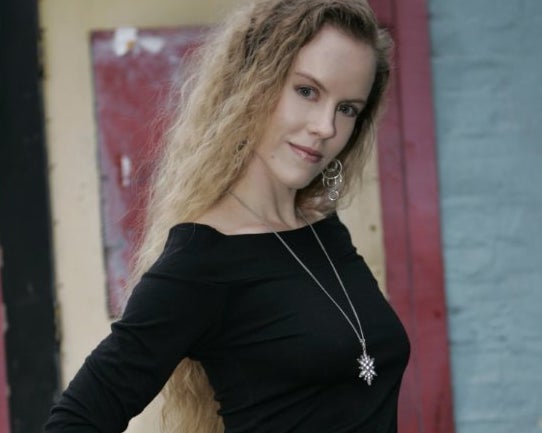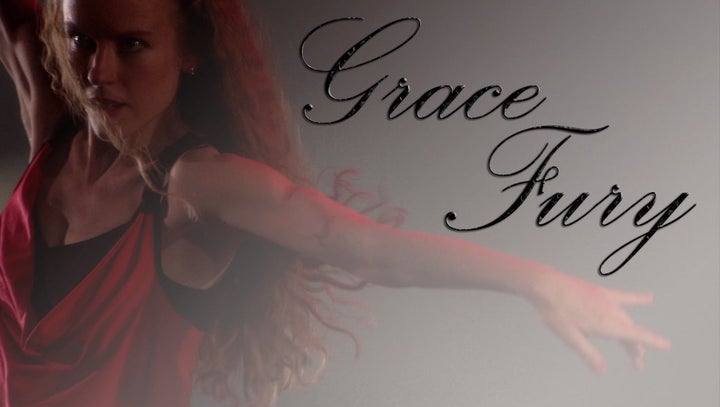
I had the chance to speak with Laura Carruthers, a dancer trained in Scottish Highland Dancing, about her new film, Grace Fury. Before we did, I wanted to get a sense of Laura’s history. I always like knowing about an artist’s journey - where they came from, how they got to now, that sort of thing. Laura told me she became immersed in the world of Scottish Highland Dancing at an early age. Her father was a strong influence, having been heavily involved in the Scottish Highland games held in Burbank, California at the time. Many of the games were akin to track and field events - the ‘stone flip’ or the ‘hammer throw’ - but there was also a great deal of music and dancing throughout. As a young girl, Laura attended the festivals, exposing herself to what would later become a fascination with dance of all forms. I myself was unfamiliar with the differences between Scottish Highland and, say Irish Step Dancing, so Laura offered me some of the distinguishing characteristics.
While both forms share a very buoyant, aerobic quality - “a perpetual state of spring,” as Laura calls it - Irish Step Dance is very audible. There is a distinctly “grounded foot-rendered rhythm,” where dancers make music with their feet, particularly the heel. The upper body remains rigid. Scottish Highland, meanwhile, is generally done in soft-shoe; the dances are done from the ball of the foot. The dancer’s upper body is fluid and has to coordinate with the lower body, adding to the challenge. In that way, Scottish Highland is similar to ballet. To the untrained eye, it may be difficult to truly appreciate the difficulty of the form. Laura adds, “It's a very hard thing to do - it's not always readable from an audience standpoint. It has tremendous challenge and you have to know what you're looking at; it's not as flashy in that sense as Irish dancing - because of the sound component - they're playing music for you with their feet - people relate to that more immediately.”
What sets Laura apart is her resistance to the oftentimes over-the-top competitive nature of Scottish Highland Dance. She acknowledges the importance of maintaining and protecting cultural respect for traditional dances - many of which we don’t even truly know the original forms of - but it becomes belabored in her mind after a while. Scottish Highland is inherently about winning, which Laura finds problematic: “To me, at some point there becomes an excessive focus on taking something that is supposed to be a cultural expression, and then objectifying it heavily and turning it into a ranking of 1st, 2nd, 3rd, 4th, and so on. To me, something was lost in that - I started to feel the need for a more creative outlet.” We agreed that adding competition to artistic expression oftentimes leads one to be “in it for the ego.” Her frustration led Laura to revisit the joy, creativity, and vivid imagination she found while dancing as a young girl, as young as 3. This exploration brings us the film, ’Grace Fury’ - what Laura refers to as being ‘the culmination of roughly 20 years of experience and experimentation.”
When I asked Laura what, or rather, who, Grace Fury was, Laura replied, “She’s very much the brainchild of my fire and grace.”

The film, which combines stage performances with behind-the-scenes footage, explores the childlike frivolity of the title character, but also offers social critique, a call to action, and a look into Grace Fury’s “cerebral diary expression.” Each ‘chapter’ of the piece begins with a medley of lively, upbeat music, then moves offstage to ask questions of the audience that may be more sobering - “an up and down ride right toward the end where we come to peace with the process of making art in this way.” The piece seems to combine all the training, technique, and passion Laura has for all the forms she’s explored into a kind of catharsis: “It is a very personal production - it has character - I want to say it has a beating heart; it’s not a generic fairy tale - there is a social critique, an intellectual component as well. It may frustrate audiences, but I feel that’s what artists are supposed to do - not everything should be according to formula. That’s what I’m trying to do.”
‘Grace Fury’ is set to be released in January 2017. To learn more about Laura Carruthers, visit her website at www.lauracarruthers.com
